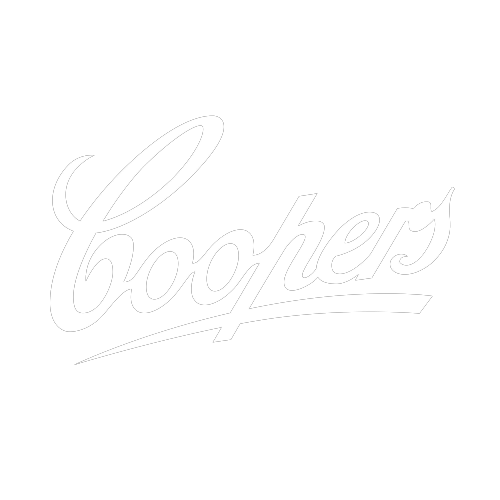The Humid Condition
9 July–14 August 20049 Jul–14 Aug 2004
The Humid Condition is not simply an exhibition that concentrates on the work of seven ‘regional artists’. It is an exhibition that also attempts to look at The Upholstery Contemporary Arts Group as a phenomenon. To some extent this group has provided solutions to the problem of a regional isolation by not relying on a limited number of established venues to show their work. If there is a sense of isolation, then the Upholstery has turned it into an advantage through individual and collaborative works that are specifically of the area in which they are based. The setting up of artist run initiatives or events and their studio/gallery space, The House, guaranteed that the group had constant access to exhibition venues. This also had the effect of maximising community interest and providing artists who are not bona fide group members with opportunities to exhibit.
In 2001 the collective established The Upholstery Series, consisting of themed contemporary ‘art happenings’ in a variety of public locations. Over time, the Upholstery developed a distinct style that was characterised and driven by life in a tropical environment and a proximity to the Western Pacific region. Group members critiqued and parodied the common stereotypes associated with Far North Queensland. Although the work is often amusing it also has a serious side as each artist deals with the issues that affect them both individually and as a group.
Artists
Sophie Cadman’s assemblage works make use of all manner of materials: digital prints, crayon, kewpie dolls and other found objects. She incorporates these elements to propose a world in which childhood memories, cultural ideals and assertion of self are equally important in determining ideas of gender in society.
The doll as an icon of every girl’s childhood is a recurring theme in Cadman’s work. She uses this culturally laden image to question notions of womanhood and femininity but also as a statement of her own identity and life experience. Home Sweet Home displays the domestic scenes that can be found being ‘played’ out in any home. However, it is the clever use of text, a strategy used in earlier feminist art, that gives the work a sharp satirical edge. ‘If you’ve got a little house, and you keep it spic and span, perhaps there’ll come to live in it, a tiny little man’ – a myth being subverted daily by both males and females who are dissatisfied with traditional gender roles.
In Allure, digital prints of details of Cadman’s clothing are cut into the shape of dolls and mounted onto Perspex. The work references the centuries old technique of paper doll making and the activities of young girls in adorning these objects in the fashions of the day. It is in this work that Cadman explores ideas of the doll as a seemingly benign object of play and reveals the act of ‘dressing up’ as an apparatus of gender stereotypes and objectification of women. It is through this imagery that Cadman can both question these stereotypes whilst also asserting her own identity.
Ross Hucks pays no apologies in acknowledging the greats of the Australian art-world who have inspired him and from whom he draws reference. The assemblage art of Rosalie Gascoigne and the suburban inspired paintings of Howard Arkley are paid homage to, albeit with a distinctively northern Australian edge.
H is for Howard builds upon a previous work entitled After Arkley and explores the ideas of its namesake by highlighting the seemingly banal interior and exterior landscapes of the suburbs. With a fresh Far North Queensland approach, Hucks incorporates the hibiscus flower the reflects tropical origins rather than the geometric iconography of Arkley’s Melbourne suburbs. While obviously a tribute to the late Arkley the scale and shape of the H also references the goal posts of the great Australian recreational pursuit, AFL.
The long bitumen road is imagery firmly etched in Huck’s psyche, as it is with other artists in the Upholstery Contemporary Arts Group. Kinetic Yellow Revisited attempts to capture a chaotic sense of movement and draws upon the earlier work of Gascoigne. However, unlike assemblage art, Hucks has created, rather than used found objects, for his works.
Ross Hucks pays no apologies in acknowledging the greats of the Australian art-world who have inspired him and from whom he draws reference. The assemblage art of Rosalie Gascoigne and the suburban inspired paintings of Howard Arkley are paid homage to, albeit with a distinctively northern Australian edge.
H is for Howard builds upon a previous work entitled After Arkley and explores the ideas of its namesake by highlighting the seemingly banal interior and exterior landscapes of the suburbs. With a fresh Far North Queensland approach, Hucks incorporates the hibiscus flower the reflects tropical origins rather than the geometric iconography of Arkley’s Melbourne suburbs. While obviously a tribute to the late Arkley the scale and shape of the H also references the goal posts of the great Australian recreational pursuit, AFL.
The long bitumen road is imagery firmly etched in Huck’s psyche, as it is with other artists in the Upholstery Contemporary Arts Group. Kinetic Yellow Revisited attempts to capture a chaotic sense of movement and draws upon the earlier work of Gascoigne. However, unlike assemblage art, Hucks has created, rather than used found objects, for his works.
The infusion of the Western ideologies of art making, specifically minimalist and post-minimalist aesthetics, provides for a practice that is able to engage in international contemporary art dialogue while retaining the traditional elements of Street’s Papua New Guinea heritage.
Barcode is a cumulative work that sums up Street’s sensibility in its sheer simplicity. The reductive elements build upon screen-prints on canvas and Perspex that have an underlying Pop Art Influence. However, through the purity of the geometric minimalism, the message of the work becomes even more pertinent. The work attains an air of reverence, not unlike the minimalist installations of Donald Judd. This makes the message of consumerism, which it refers to, seem even more ludicrous – as a new religion.
Bauhaus Colour Series also explores reductive elements through colour. As the title suggests, Street has drawn from the teachings of the Bauhaus school, specifically Johannes Itten’s theories of rhythm and colour expounded in his text Design and Form. Street has chosen to use yellow as his key colour and added black and white to achieve the primary colours noted in Itten’s theory – yellow, blue and red. Each individual panel size is related to each other in terms of colour ratio.
Simon Poole undertook his apprenticeship in art behind the wheel of a four-wheel drive during a 76,000 km trek across the Australian continent. He describes the ‘atmospheric and overwhelming nature of the Australian landscape as creating a sense of euphoria’.
It was after arriving in Cairns that Poole had the opportunity to consolidate these experiences with formal qualifications in visual arts. This provided a means for him to channel energies into full-time art making. The result is a body of work with a unique contemporary slant on the Australian landscape, from the quintessential outback to the suburban backyard. However, Poole’s vision is far from traditional, his landscapes are always an abstraction of the real thing and have a satirical conceptual edge that gives a seemingly whimsical work poignancy.
Simon Poole undertook his apprenticeship in art behind the wheel of a four-wheel drive during a 76,000 km trek across the Australian continent. He describes the ‘atmospheric and overwhelming nature of the Australian landscape as creating a sense of euphoria’.
It was after arriving in Cairns that Poole had the opportunity to consolidate these experiences with formal qualifications in visual arts. This provided a means for him to channel energies into full-time art making. The result is a body of work with a unique contemporary slant on the Australian landscape, from the quintessential outback to the suburban backyard. However, Poole’s vision is far from traditional, his landscapes are always an abstraction of the real thing and have a satirical conceptual edge that gives a seemingly whimsical work poignancy.
Samuel Tupou adapts the medium of screen-printing to reveal a uniquely Far North Queensland style: a life presented as being filled with crocodiles, swizzle sticks, palm trees, bikini clad women and the coral reefs. Topou’s screen prints on Perspex, paper and canvas reference Pop Art by way of their ability to transform the mundane through duplication and repetition.
Tupou takes the colonised symbols of crocodiles, aircraft and swizzle sticks to give meaning beyond signifiers of tropical holiday paradises perpetuated within the tourism and advertising industries.
Tupou’s use of popular icons can also be related in part to his cultural background and geographic location to the Asia-Pacific region. Imagery and symbols such as the aircraft, for example, hold great value as connection/separation between cultures, as a means of bringing people together or highlighting the ‘tyranny of distance’ that is part of one’s psyche when living on the northern regions of Australia.
His Crocodile Wallpaper becomes a contemporary expression of his Tongan heritage, which includes the significance of tapa cloth and sacred cultural symbols. Through the literal layering of symbols, Tupou is able to explore the multiple meaning of both personal and shared identities.
Continuing to develop his Muscle Car series shown at the IMA in 2003, Wallwork moves ever closer to the holy ground of car worship by looking at the ‘petrol head’ phenomenon as both a national sport and a type of religion. Holy Trinity presents muscle car striped statuettes of Jesus sources from religious paraphernalia shops, with the emblematic bunting – found at any good sporting event, set off with down-lights to create an altar fit for any religious ceremony. From altar to temple, What’s under your Hood? emanates celestial lights and smoke to create a truly immersive experience for the uninitiated or converted.
The Lino and Lace Series, first exhibited at the Suburban exhibition in 2003 seems to be in stark contrast, moving away from fanatical car culture to explore gender roles in the domestic landscape. However on closer inspection it is revealed that he has used zinc anneal, 2 pack paint and metal flake automotive materials. These recurrent themes and materials are the trademark of Wallwork’s art.
Continuing to develop his Muscle Car series shown at the IMA in 2003, Wallwork moves ever closer to the holy ground of car worship by looking at the ‘petrol head’ phenomenon as both a national sport and a type of religion. Holy Trinity presents muscle car striped statuettes of Jesus sources from religious paraphernalia shops, with the emblematic bunting – found at any good sporting event, set off with down-lights to create an altar fit for any religious ceremony. From altar to temple, What’s under your Hood? emanates celestial lights and smoke to create a truly immersive experience for the uninitiated or converted.
The Lino and Lace Series, first exhibited at the Suburban exhibition in 2003 seems to be in stark contrast, moving away from fanatical car culture to explore gender roles in the domestic landscape. However on closer inspection it is revealed that he has used zinc anneal, 2 pack paint and metal flake automotive materials. These recurrent themes and materials are the trademark of Wallwork’s art.
Originally from Aotearoa/New Zealand, Deanna Maich’s paintings explore Queensland’s unique architectural dwelling, the ‘Queenslander’ with a distinctly surrealist quality.
Maich’s background in theatre arts and time spent studying Renaissance art and architecture at Modena University, Italy, have instilled a passion for architectural forms and their appropriateness/inappropriateness for the natural environment. Nowhere is this made more apparent than living in the extremities of tropical climates such as Far North Queensland where adequate dwellings can keep you from going ‘troppo’ during the tortuously hot ‘build-up’.
In Summoning Reinforcements the Queenslander’s demise is pre-empted by the triffid-like spies and their impending replacement with besser-block air-conditioned units that dislocate their dwellers from the environment.
The series Passive Living highlights the unique features of the Queenslander as it ‘sits softly’ within the natural environment – highset, casement windows, high ceilings and overhanging eaves. Maich takes her critical approach to our urban lifestyles further in the more explicit work, TV Dinners where she questions and pokes fun at the dubious aesthetics of fast food and its ‘nutritional’ value.















